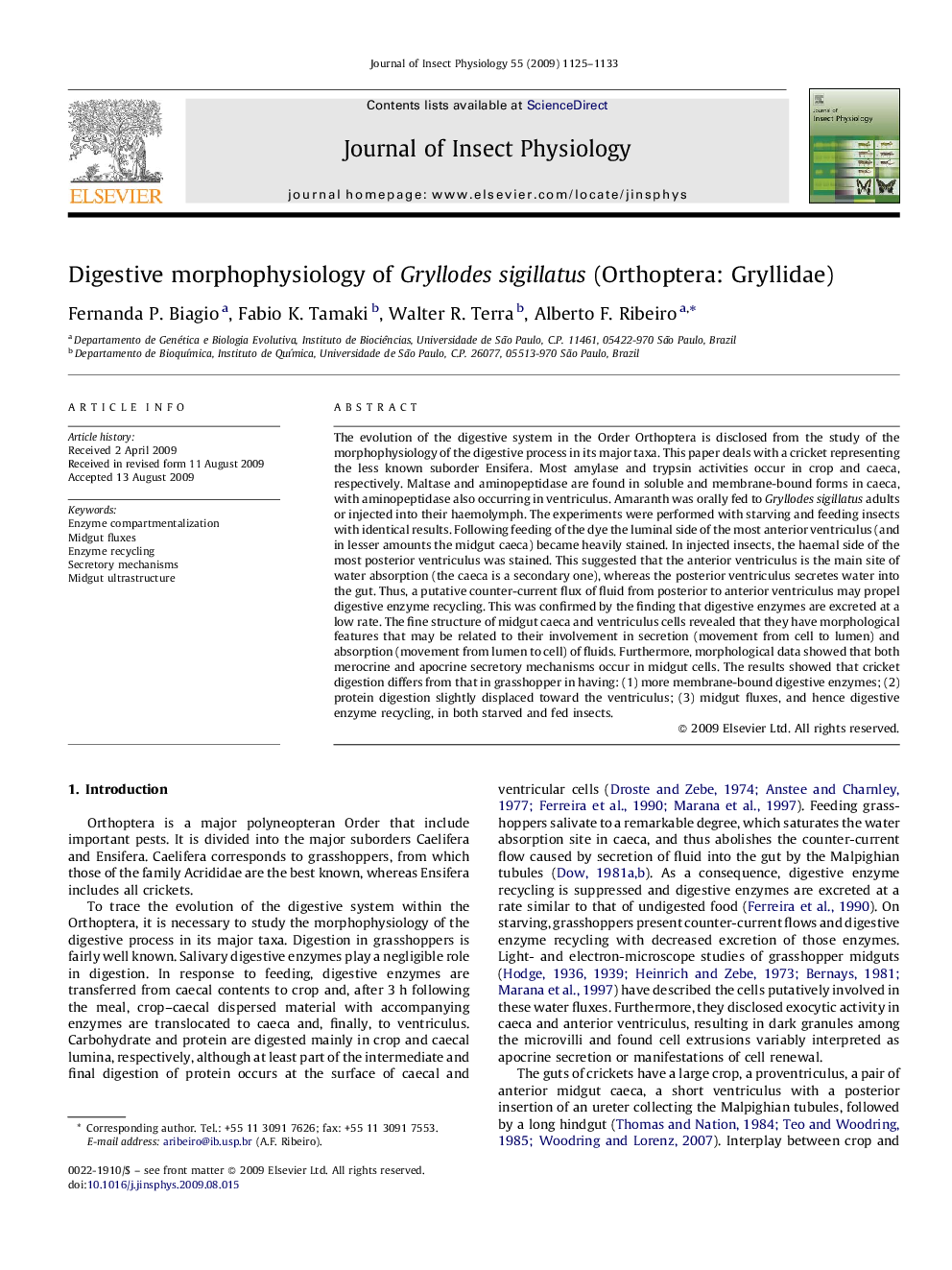| Article ID | Journal | Published Year | Pages | File Type |
|---|---|---|---|---|
| 2841025 | Journal of Insect Physiology | 2009 | 9 Pages |
The evolution of the digestive system in the Order Orthoptera is disclosed from the study of the morphophysiology of the digestive process in its major taxa. This paper deals with a cricket representing the less known suborder Ensifera. Most amylase and trypsin activities occur in crop and caeca, respectively. Maltase and aminopeptidase are found in soluble and membrane-bound forms in caeca, with aminopeptidase also occurring in ventriculus. Amaranth was orally fed to Gryllodes sigillatus adults or injected into their haemolymph. The experiments were performed with starving and feeding insects with identical results. Following feeding of the dye the luminal side of the most anterior ventriculus (and in lesser amounts the midgut caeca) became heavily stained. In injected insects, the haemal side of the most posterior ventriculus was stained. This suggested that the anterior ventriculus is the main site of water absorption (the caeca is a secondary one), whereas the posterior ventriculus secretes water into the gut. Thus, a putative counter-current flux of fluid from posterior to anterior ventriculus may propel digestive enzyme recycling. This was confirmed by the finding that digestive enzymes are excreted at a low rate. The fine structure of midgut caeca and ventriculus cells revealed that they have morphological features that may be related to their involvement in secretion (movement from cell to lumen) and absorption (movement from lumen to cell) of fluids. Furthermore, morphological data showed that both merocrine and apocrine secretory mechanisms occur in midgut cells. The results showed that cricket digestion differs from that in grasshopper in having: (1) more membrane-bound digestive enzymes; (2) protein digestion slightly displaced toward the ventriculus; (3) midgut fluxes, and hence digestive enzyme recycling, in both starved and fed insects.
